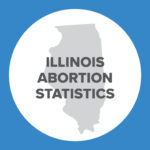Fact Sheet: National Abortion Reporting, It Is Time to Upgrade
As important as the topic of abortion is acknowledged to be, the inadequacies in public information about the procedure and its medical, economic and social consequences remain a national scandal. Organizations across the ideological spectrum agree on the need for better reporting, calling our current system of uneven state data collection and voluntary national reporting “incomplete and out of date” (Lozier Institute) or noting that the “quality and timeliness” of data collection are variable (Guttmacher Institute).
Issues with quality and timeliness are widespread, and likely to increase as federal Food and Drug Administration policy regarding distribution of mifepristone, the method now used in a majority of U.S. abortions, moves away from medically supervised settings to abortion via telemedicine, the mail, and pharmacy chains. This new reality, now being contested in the courts, will inevitably mean less certainty about data of all sorts. Such factors as whether the pill regimen was in fact ingested, whether complications occurred and were treated, or chemical abortions were reversed and those pregnancies continued will now be exponentially harder to determine using traditional abortion reporting requirements and methodologies.
EXISTING FEDERAL POLICY
Abortion is recognized as a vital statistic by the CDC. Yet there is no federal requirement for all states to report abortions. A handful of states, particularly Minnesota and Oklahoma, have shown that timely and fairly comprehensive data can be collected and collated via electronic reporting at minimal cost. States have established a strong record of producing aggregate reports that protect individual privacy by assigning neutral identifiers and suppressing small numbers that could compromise privacy. But the defects that have characterized historic federal policy in this area continue. For example, three states, including California (with 16.6 percent of all U.S. abortions in 2020), report no data to the Centers for Disease Control (CDC), 20 states have not yet completed or published reports within the past two years as of this writing, and the consistency of reporting is poor. As the Guttmacher Institute has noted, 21 states and the District of Columbia do not require the reporting of abortion complications, 33 states and D.C. do not require women to indicate the reason the abortion is being performed, and only six states require the abortion center to report if the unborn child could survive on their own.
IMPROVING NATIONAL POLICY
States remain the front line for improving data collection about abortion and related subjects. As an initial federal step, S. 15 has been introduced in Congress by Sen. Joni Ernst (Iowa), and H.R. 632, introduced by Rep. Ralph Norman (So. Carolina). Named the Ensuring Accurate and Complete Abortion Data Reporting Act of 2023, the bill moves national reporting forward while safeguarding current practices that define the public health parameters of the data involved and protect individual privacy. The law will end the voluntary nature of reporting by the states, bring the three non-participating states aboard the process, and convert the fragmentary U.S. system of abortion reporting into a more unitary, European-style system that has produced insights and information that differ markedly from the current state-based scheme.
S. 15/H.R. 632 accomplishes this goal by amending Section 1903 of the Social Security Act (42 U.S.C. 1396b) and making receipt of a state’s share of funding for family planning services and supplies described in section 1905(a)(4)(C) contingent upon the state’s provision of an annual report to the CDC containing at least 10 categories of information. These categories include demographic information about the women and girls obtaining abortion as well as threshold information about the pregnancies involved. The ten categories to be covered include:
- Maternal age in years.
- Gestational age in completed weeks at the time of abortion.
- Maternal race.
- Maternal ethnicity.
- Maternal race by ethnicity.
- The abortion method type.
- Maternal marital status.
- Previous pregnancies of the mother, including the number of previous live births, the number of previous induced abortions, and the number of previous spontaneous abortions.
- Maternal residence (limited to county and State).
- Whether the child survived the abortion.
In addition to these mandatory categories of information, the legislation gives the Secretary of Health and Human Services, acting through the CDC, the power to request additional information from the states, though compliance with these requests would be voluntary under the law. In order to facilitate response, the bill requires the CDC to create a “standard worksheet” that would contain these categories for compilation by the states or transfer from their reports. The bill would afford the states two full years to implement national reporting, ample time under circumstances in which many states already collect this data and share it with the federal government.
ADVANTAGES OF S.15/H.R. 632
The Ensuring Accurate and Complete Abortion Data Reporting Act of 2023 serves the public interest in securing unbiased information about a public policy topic and metric of great importance in the public square. It will ensure that reporting by the states is complete for all U.S. jurisdictions and will have a baseline consistency allowing state-by-state and year over year comparisons. Information will be regularly and uniformly available to analysts of diverse convictions and beliefs about the issue under study. In addition:
- The bill will strengthen public policy analysis at a particularly volatile period in policy-making where changes in state laws and related policies will affect abortion rates, the gestational age at which abortions are performed, the rate of repeat abortions and other factors of significance to women’s and family health.
- National reporting of a uniform nature will assist in identifying gaps in public information, and the bill will afford the Secretary of Health and Human Services new flexibility to seek additional reporting elements from the states in light of changes in abortion policy and practice.
- The bill will require three states with major roles in national abortion policy and practice to share information about the incidence and nature of abortion within their borders, particularly in locales where late-term abortions are common or state policy is encouraging interstate travel to obtain abortions not available by law or common practice in other states.
- National data collection will assist analysts and policymakers in making more valid comparisons between the U.S. experience as one of the most liberal abortion jurisdictions in the world and other nations that have more limited laws and public policies.























